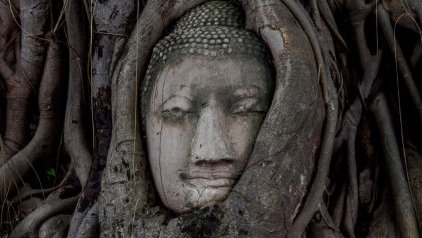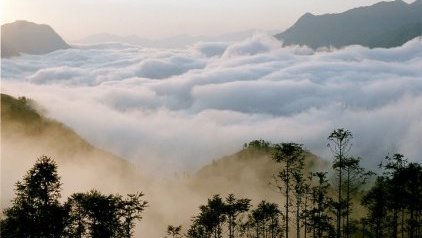10 Mysterious Places Around Indochina – Part 1
Indochina has many awe-inspiring mysterious places waiting to be discovered. From temples that were swallowed by the jungles to abandoned buildings in the last century, there are several destinations in Indochina that were covered in mystery.
Indochina truly has bizarre places shrouded in mystery. They keep scientists, historians, and archaeologists searching for answers, and the rest of us astounded by the secrets and mysteries. Some of these places are ancient monuments built by skillful craftsmen to honor kings, national heroes, or worship religious figures. Some are simply so old, unfinished that we are still unclear about who built them, how they were built, or built for what purpose. Others are abandoned buildings – have not touched by the human hand for a long time, and they become mysterious riddles!
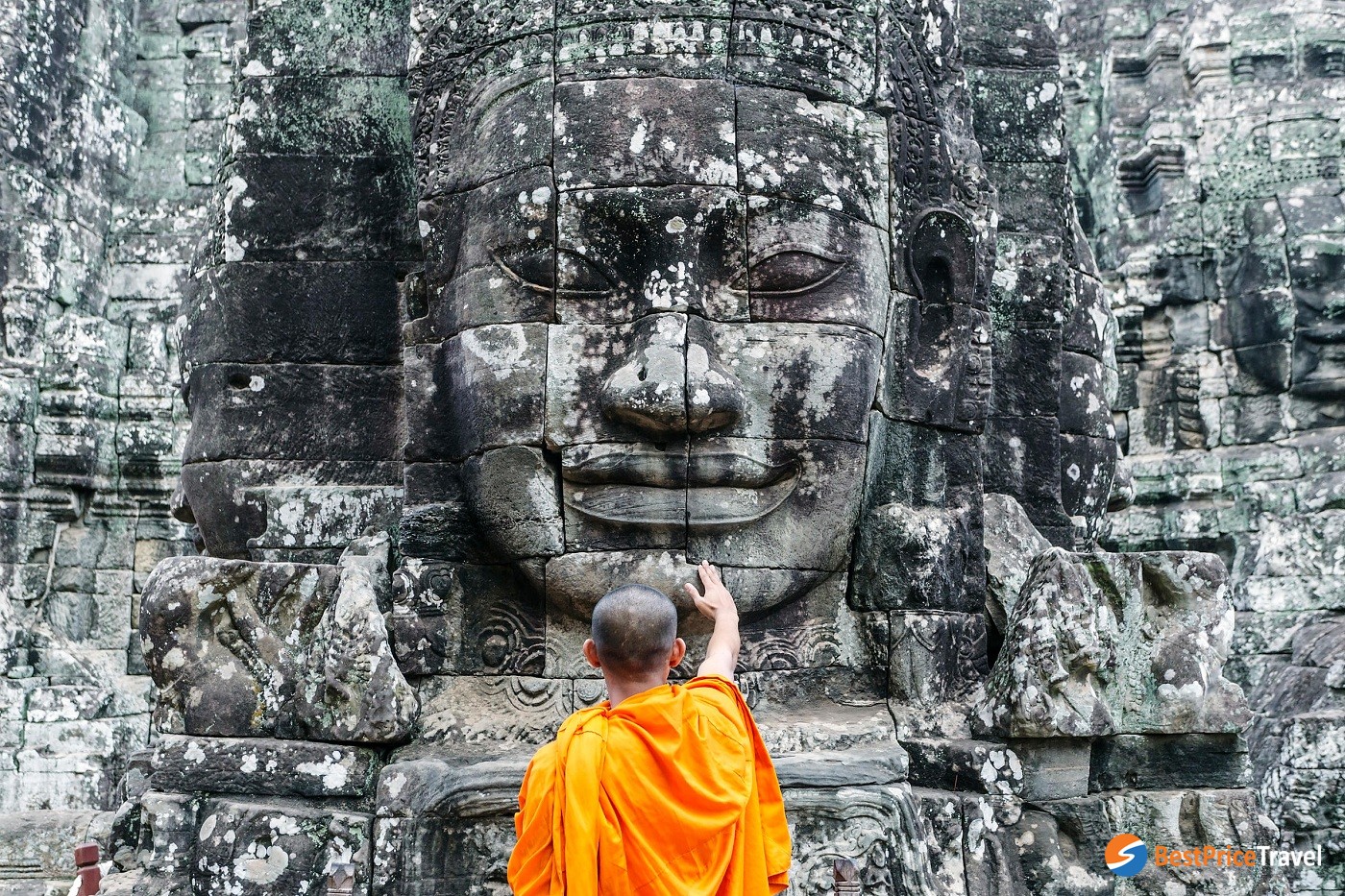
Indochina is known to be a land of mysteries
The mysterious places below are some of the most amazing. So sit back and be astounded by these mysterious places around Indochina.
Banteay Chhmar (Cambodia)
Most tourists choose to visit Cambodia because of its so famous temples of Angkor which will leave an indelible impression to any visitors when coming here. Angkor, the capital of the Khmer Empire, includes a long list of sites: Angkor Wat, Angkor Thom, Ta Prohm, Bayon Temple, Banteay Kdei, Preah Khan, Phnom Bakheng, Banteay Srei, Ta Keo, and so many other temples. Among them, Angkor Wat is the largest and most spectacular and also most well-known of all. But few people know about the "other Angkor Wat" - Banteay Chhmar.
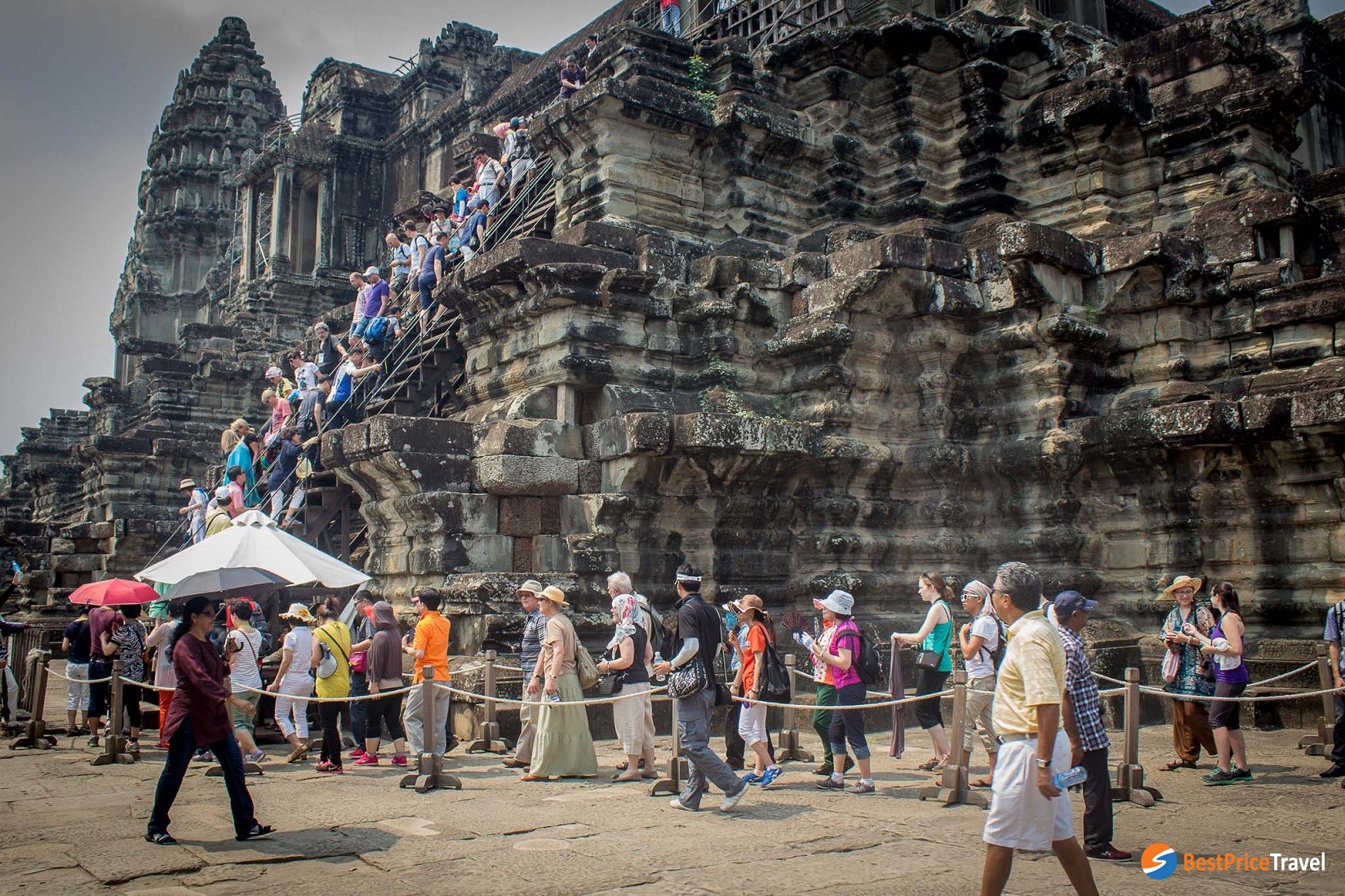
While tourists flock to the largest religious temple in the world, Angkor Wat
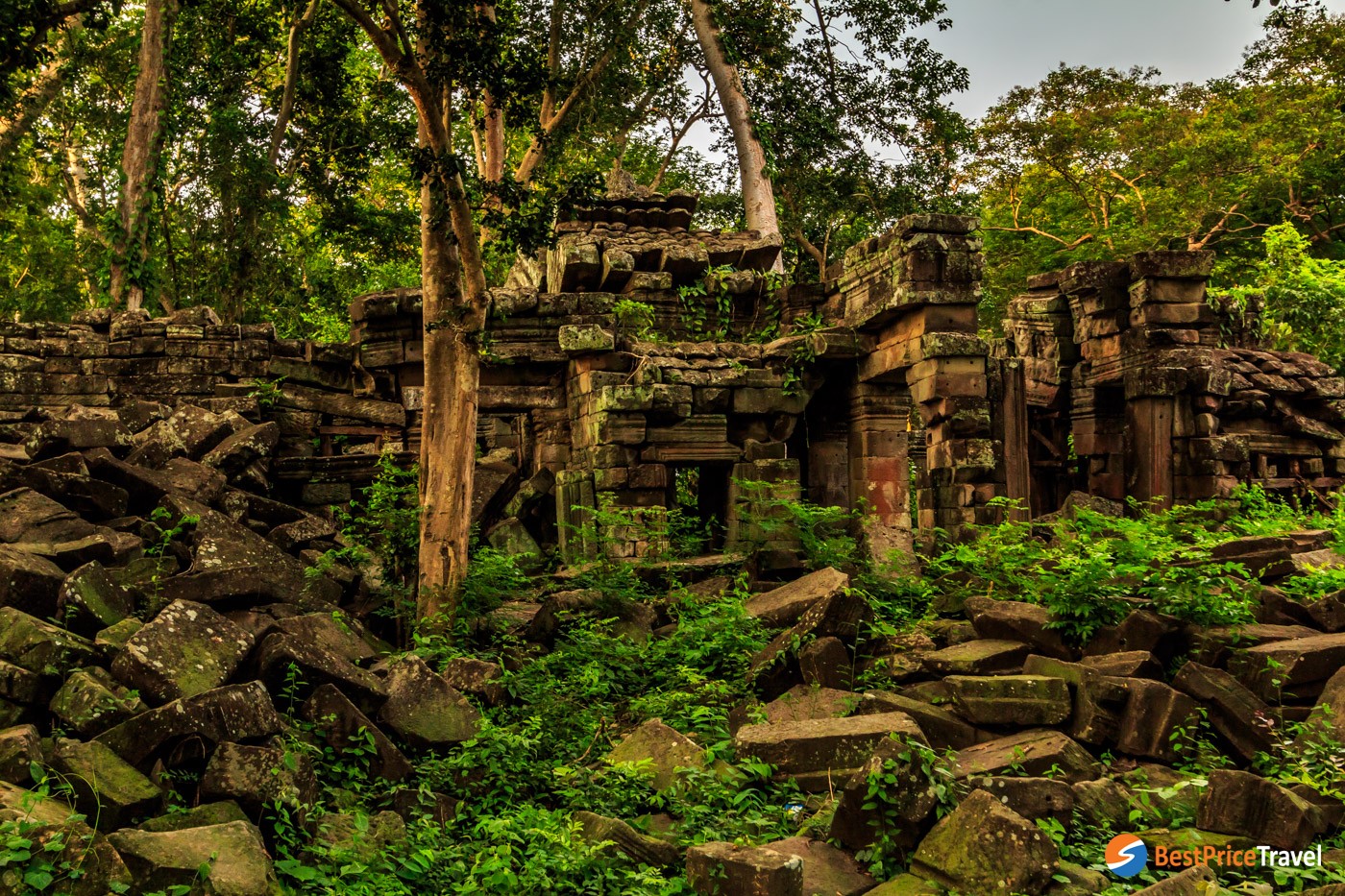
The lesser-known Banteay Chhmar Temple offers serenity and beauty without the crowds
Banteay Chhmar is an abandoned ancient city that lies deep in the jungle near the border with Thailand, roughly 170km outside of Angkor. Banteay Chhmar was built in the late 12th – early 13th century during the reign of King Jayavarman VII. Banteay Chhmar is believed to be one of the greatest architectural masterpieces of Southeast Asia. It was claimed that the temple rivaled Angkor Wat in size and magnificence. Similar to Angkor Wat, the main temple is surrounded by a big moat on all four sides. There is also a four-faced tower like those of Bayon Temple in Angkor Thom. Looking carefully, visitors can find beautifully rendered bas-reliefs representing the war between the Khmer and Champa kingdoms. Abandoned to nature for nearly 800 years, then separated from the world by the Khmer Rouge and affected by the chaos of a civil war, the towers, chambers, and intricate bas relief carvings of the temple have slowly collapsed to the encroaching jungle. However, thousands of images of Buddha were not destroyed at Banteay Chhmar.
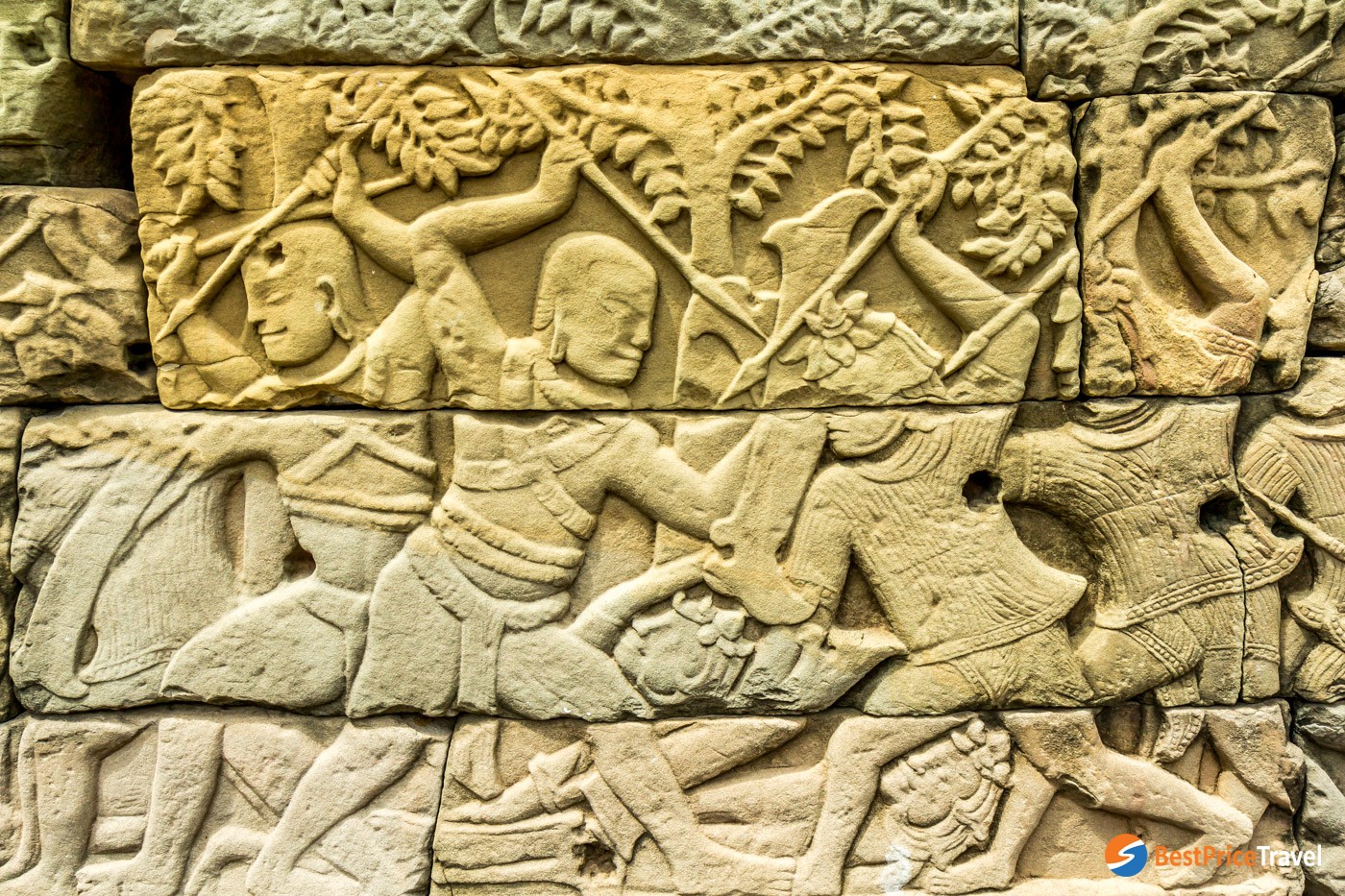
Remarkable bas reliefs, Khmers on the left, fighting Chams on the right
The ancient city of Bagan (Myanmar)
Bagan is the site of a ruined city in central Myanmar that is cover by a lot of temples and pagodas, literally. It was the capital of the prosperous Bagan Kingdom which existed from the 9th to 13th centuries before the kingdom was invaded by the Mongols in 1287.
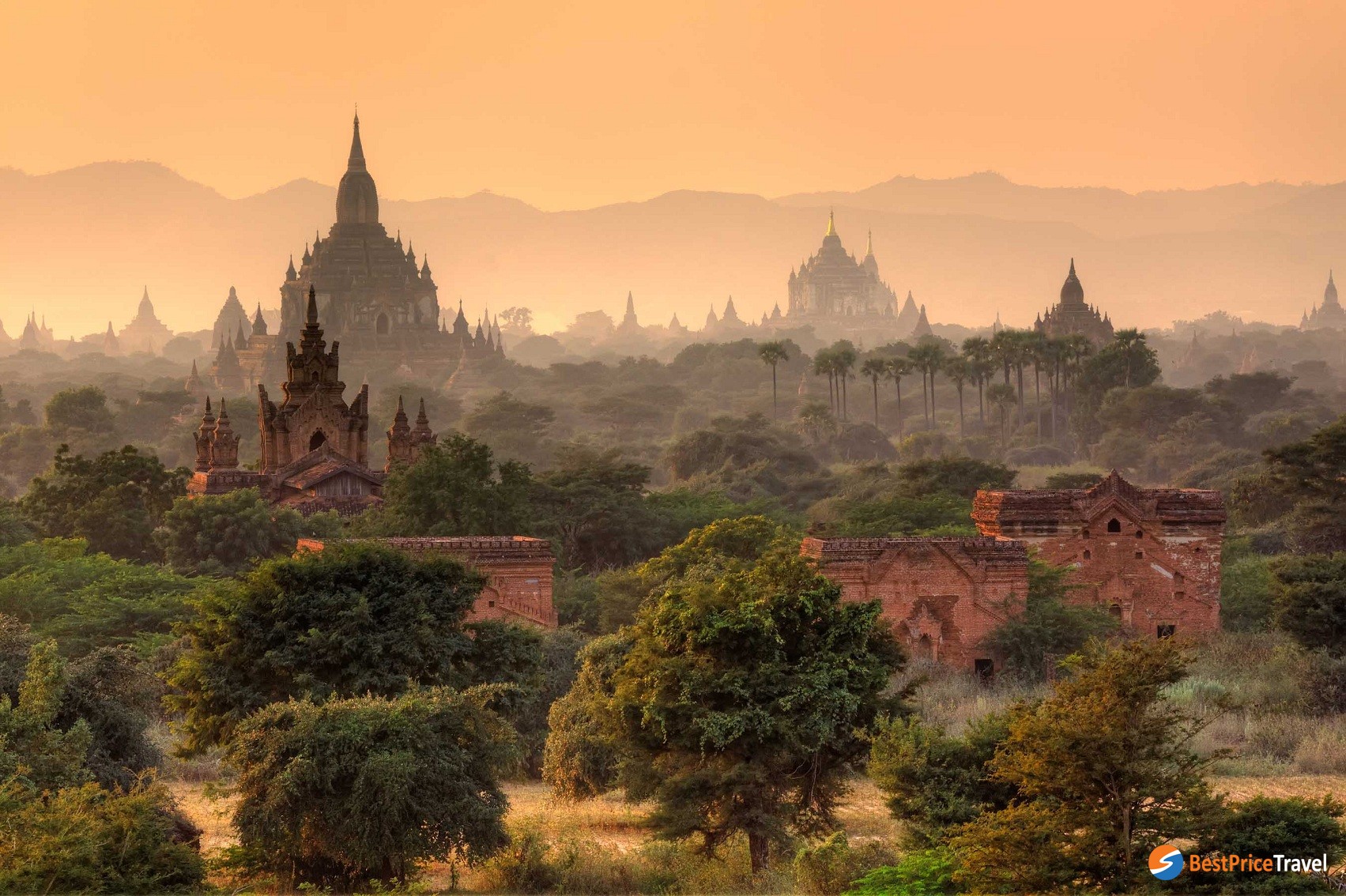
As far as the eyes could see, thousands of temples rise from the ground of the Plain of Bagan
Bagan was a vibrant religious and cultural center. Monks and scholars from India, Ceylon, Khmer Kingdom came to Bagan to study Buddhism practices as well as prosody, phonology, grammar, astrology, alchemy, medicine, and law. Bagan is a paradise for photographers as the place displays layers upon layers of temples, pagoda after pagoda, large and small, rising up from the green delta plains. In its heyday, over 10,000 temples, stupas, and other religious monuments were built, of which “only” just over 2000 survive. Today, the old capital continued to be a pilgrimage destination. What makes Bagan so remarkable is that everywhere you look there is always a temple in viewing distance. At sunset, dusk casts a golden spell on the brick ruins making the scenery somewhat a mystery and magical.
My Son Sanctuary (Vietnam)
My Son Sanctuary is a complex of Hindu temples dating back to the 4th Century. My Son was built by Cham people who dominated the Central and Southern parts of Vietnam between the 4th and 13th centuries. It was the cultural and religious center of Champa Kingdom, the great enemy of the ancient Khmer Kingdom as mentioned on bas-relief walls of Angkor temples like Bayon, Angkor Thom, or Banteay Chhmar.
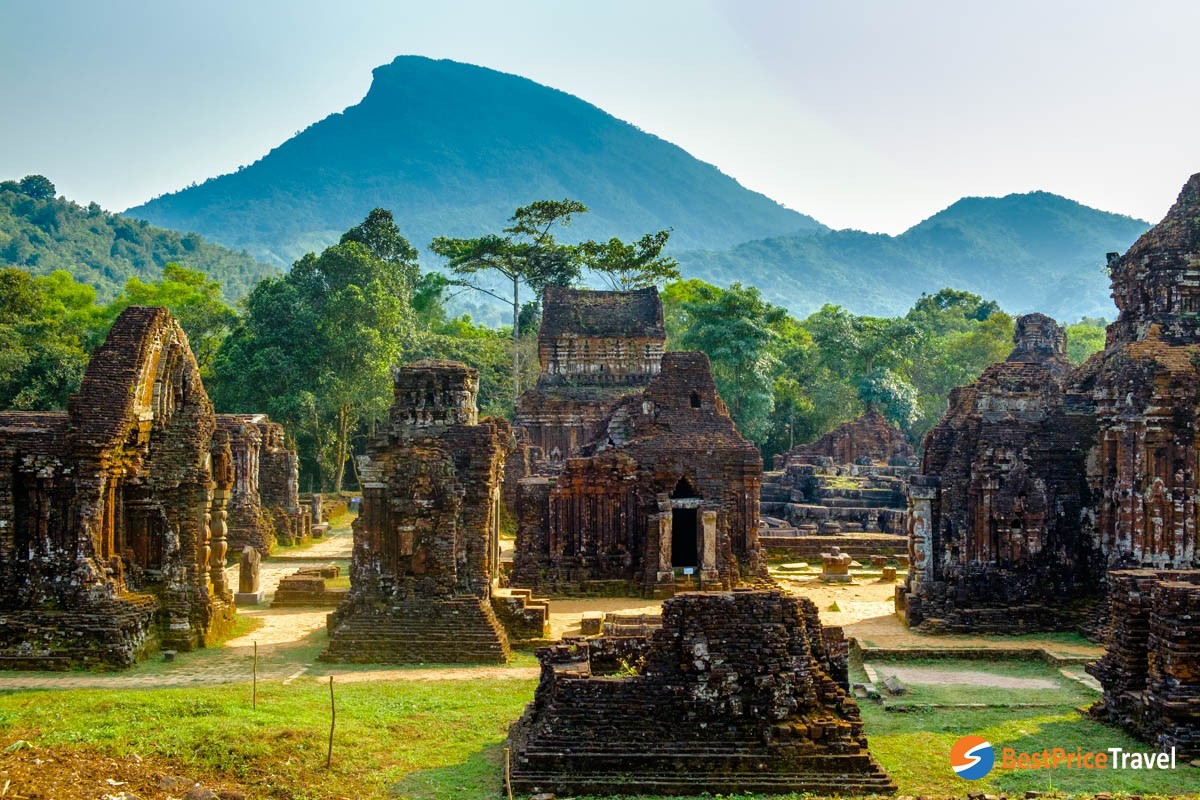
My Son was a cultural and religious center of Champa Kingdom
After the fall of the Champa Kingdom, it was forgotten and overgrown by the jungle then discovered by the French at the end of the 19th century. My Son sanctuary is considered to be one of the best examples of Hindu architecture in Southeast Asia. They are constructed in fired brick with stone pillars and decorated with sandstone bas-reliefs depicting scenes from Hindu mythology. Cham temples do not have windows, so they are very dark inside.

Symbols of entities on the walls of the temples in My Son
The structure of the temples is noticeable. If you look close to the walls, you won’t see any mortar or anything visible that would hold the bricks together. The building technique is still a secret. Ancient Cham bricks are high quality: they are more than a thousand years old, but remain sturdy and keep their original red color. A large majority of My Son's architecture was destroyed by American bombs, only 17 structures (out of 71) survived. Today, they are still impressive and you can see the ornate carvings in the bricks of various Hindu gods and symbols. If you planning a trip to Central Vietnam, don’t miss the chance to visit this unique site! No matter how long you stay, the My Son Sanctuary is the perfect half-day trip from Hoi An.
Vat Phou (Laos)
Deep in the forests in Champasak in southern Laos stands the ancient temple complex of Vat Phou (Vat Phu or Wat Phou). Built on the land of Laos, but Vat Phou is the work of Khmer people. Vat Phou represents the domination and the mightiness of the Khmer Empire which ruled a wide swath of Southeast Asia from the 9th to the 15th centuries.
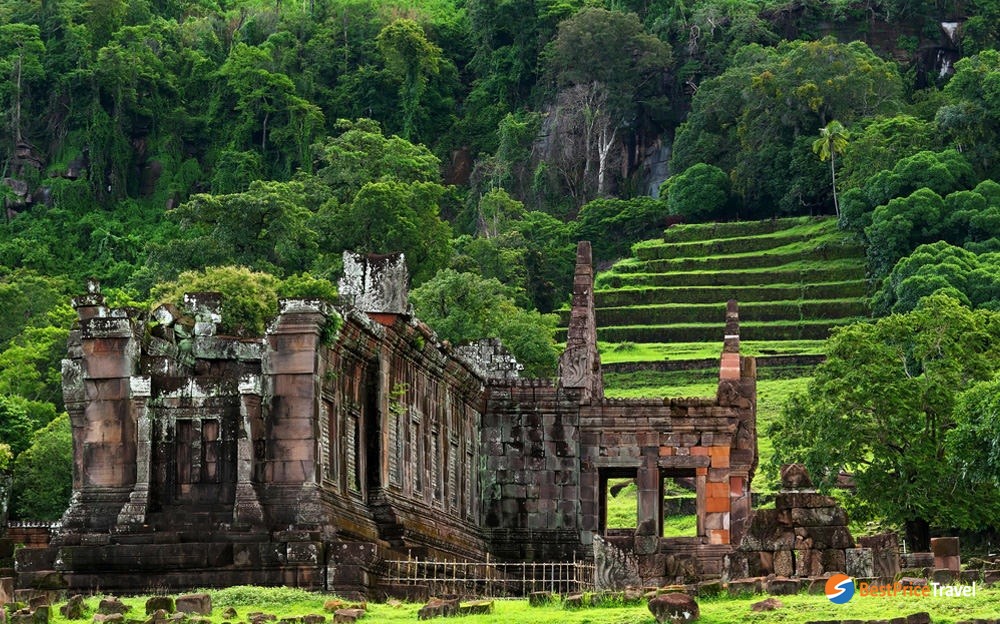
Vat Phou is one of the oldest ruins in Southeast Asia
Vat Phou is older than the famous Angkor Wat or Angkor Thom, the first structure was constructed around the 5th century and the surviving structures now saw date from the 11th to 13th centuries. The name means “temple on the mountain” and refers to its location on the foothills of the sacred linga-shaped mountain Phou Kao overlooking the ruins of the ancient city of Shrestapura (used to be the capital of the Chenla and Champa kingdoms, now called Phou Kao). Vat Phou was worshipped as the embodiment of Shiva. Despite being one of the oldest ruins in Southeast Asia, after a thousand years of wars, conflicts, and weather catastrophes, Vat Phou is still remarkably well-preserved. The temple can be visited year-round, but the annual Vat Phou Festival taking place in February is a perfect time to go.
Plain of Jars (Laos)
Plain of Jars is an incredible megalith landscape situated in the remote northeast of Laos. The name came from the collections of thousands of massive stone jars lying scattered throughout the Xieng Khuang plateau.
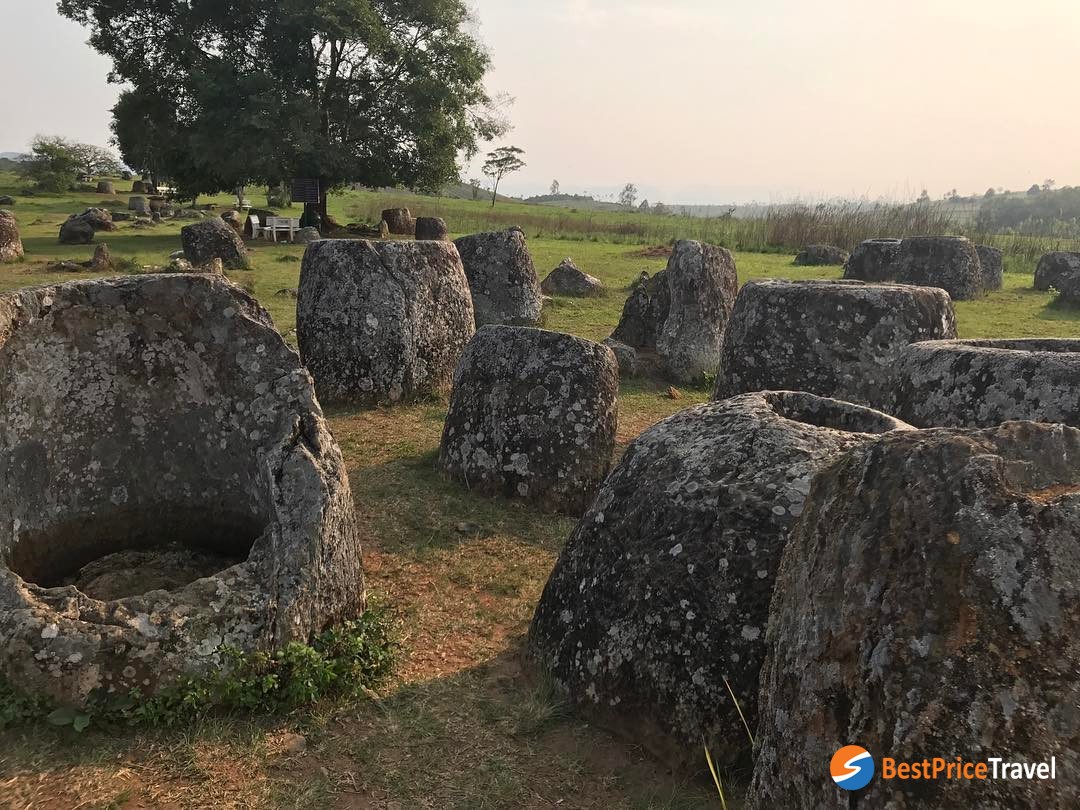
A beautiful landscape scattered with thousands of stone jars dating back to the Iron Age
Plain of Jars has spanned a very long time period in history, dating back to the Iron Age from 500 BC to 500 AD. This is a fascinating site for studying Southeast Asian prehistory. To date, despite the best efforts of archaeologists, the origin and reason for the Plain of Jars remain a mystery. The civilization that made the jars has long disappeared. Nobody is really sure why they’re here. Theories about the uses of the jars range widely like funerals urns, food, or rainwater storage while locals believe that they were used by the giants to contain liquor. One thing they do know, the jars are made of natural (solid) stone (sandstone, granite, breccia, composite, and limestone) and would have been carved by hands with iron chisels.
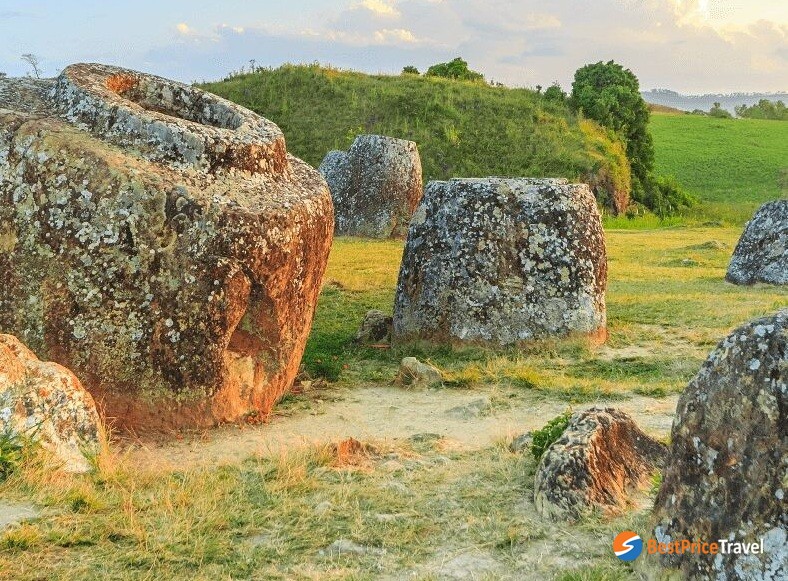
Who left the jars here?
The jars are believed to be at least 2,000 years old. They come in various sizes and shapes, between 1 and 3 meters high, each weighing several tons. Sadly, the Plain of Jars was the site of fierce fighting during the Vietnam War. Many of these archaeologically significant sites were damaged by American bombs, many of the jars have cracked or crumbled, and, there are tons of unexploded ordinance lying around the sites until these days. As a result, many sites have remained untouched for decades. About 90 sites have been discovered around the plain, but only 12 are opened to the public.
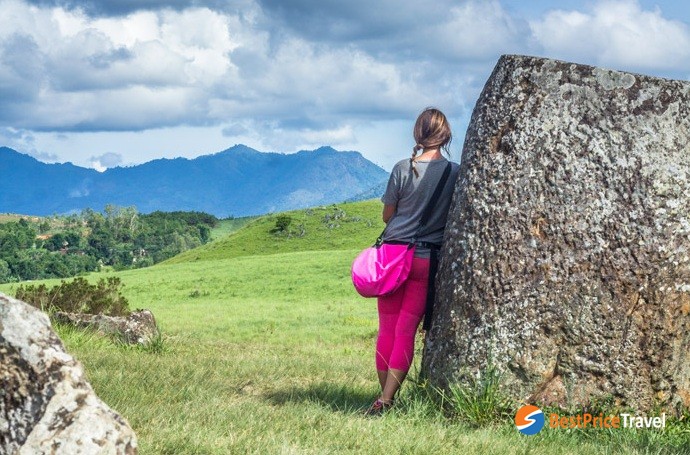
The vibe around the Plain of Jars is eerie and somber
While the bombing campaign ended decades ago, their legacy is terrible. It was very difficult after the war and people had to use any resources they could. And from the bombs and fragments of bombs which are left in the ground, local people from Ban Napia, a village some 40km from the provincial capital of Xieng Khuang, melt the scrap metal to make it into something positive: spoons, bracelets, key chains, bottle openers or rings. The objects are truly beautiful and rough. They may look easy, but the stories behind them are not. If you have the chance to visit this place, consider buying back some "bombs" from Laos to support their life. That's really meaningful!
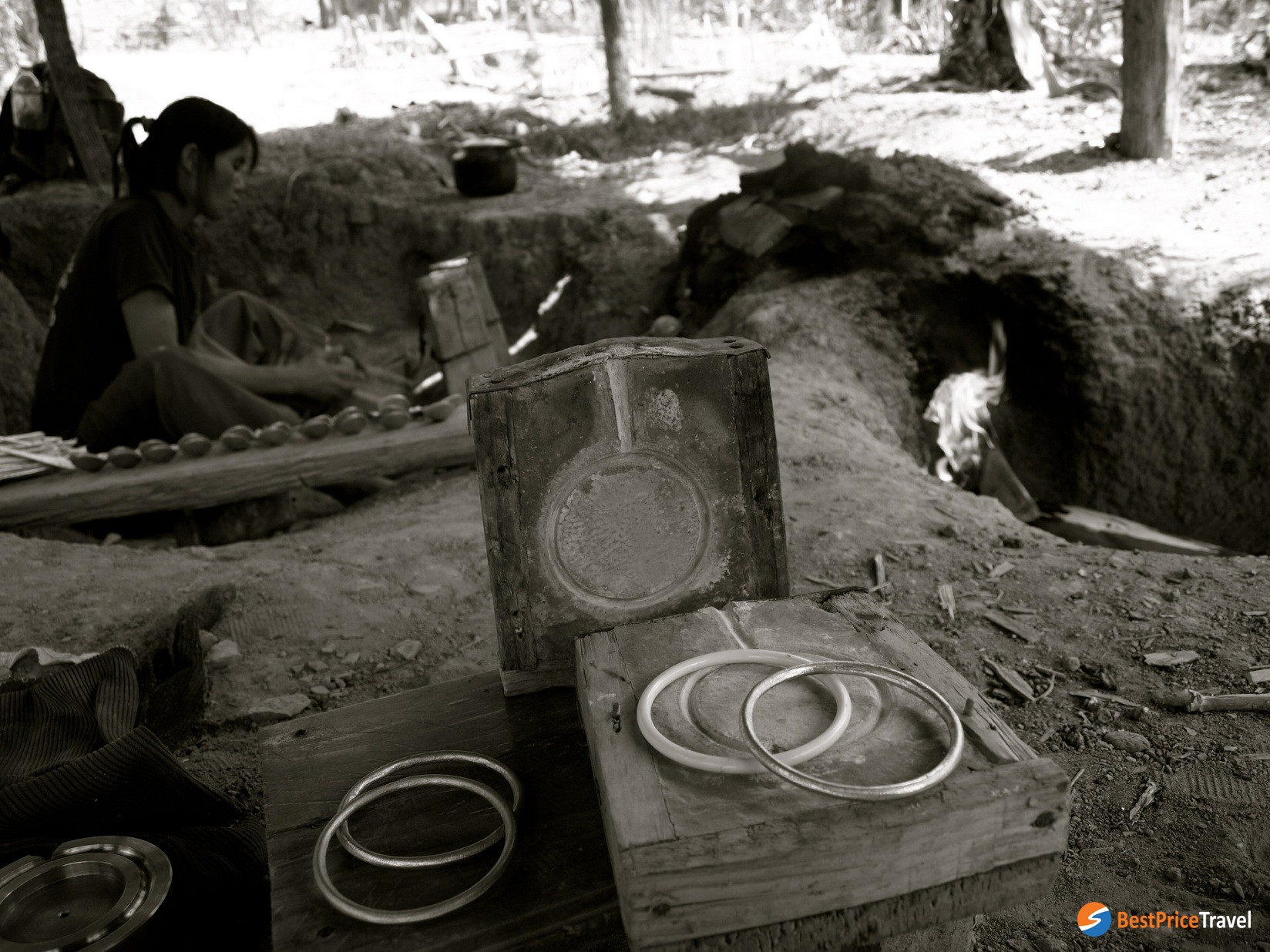
"Bomb Bracelets" made from recycled aluminum
See more about the mysterious places around Indochina.
Xuyen
(Image Sources: Internet)

